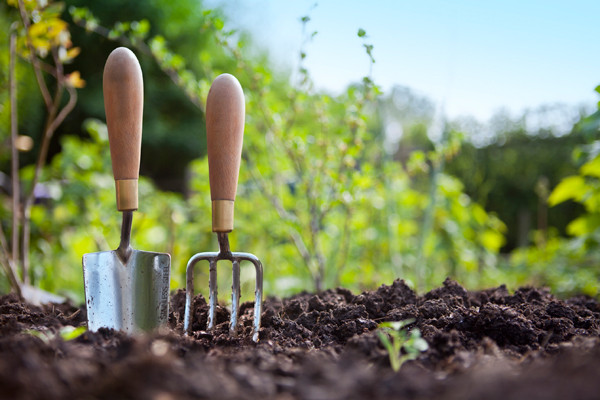It’s generally in mid to late March that the sun and wind start to dry up the ground and spring really begins in the garden. Soon soil temperatures will begin to rise and growth will start.
Now is the time to tidy your beds and borders. This will get them back in shape, ready for another growing season. Go through them, forking out any weeds and cutting down any dead stems of perennial plants left standing. Cut as close to the base as possible, without damaging emerging buds or young foliage. Perennials grow from the centre out. They need to be divided to keep them young, healthy and flowering.
Depending on the plant this usually needs to be done every three to six years after planting. You will know when it needs doing, the centre may have died, the plant has outgrown its space or it is just not flowering to its best. Dig up and divide by cutting with a spade into three or four pieces. Replant one piece in the hole with lots of well-rotted garden compost. Plant the rest elsewhere or give it away.
Starting at the back of the bed or border, fork over the ground between the plants to loosen it up. Work your way forward, so as not to walk on your work. Clean up any debris as you go, as well as any slugs and snails.
Compost
Mulch after you have finished. The best mulch is your own homemade garden compost. Empty your bins, ready for the new season. Mulch should be a minimum of 5cm (2in). You should mulch every year as it benefits the garden in many ways. It will save you work, as it covers annual weed seeds, preventing germination. It adds humus to soil you can’t dig because plants are growing in it. It also encourages worms, who will benefit your soil.
Prune modern shrub roses – that is Hybrid Teas and Floribundas. Start by taking out any dead or diseased shoots. Then any that are crossing the centre of the bush. Stop and stand back. Take a good look at what is left. Pick four or five of the strongest looking shoots. Cut out all other shoots to their base. The four or five you have picked should be cut back to approx. 30cm (1 foot) above ground level, about 1cm (0.5in) above an outward facing bud using a sloping cut away from the bud. The finished bush should be wine-glass-shaped. This will allow air movement, which helps prevent blackspot, while giving each stem the maximum amount of sunlight.
Dogwoods that are grown for their winter stem colour should be pruned by cutting stems back to 15cm/30cm (6in/12in) above ground level. This will encourage regrowth of new stems which have the best colour.


 Paul Gargan
Paul Gargan